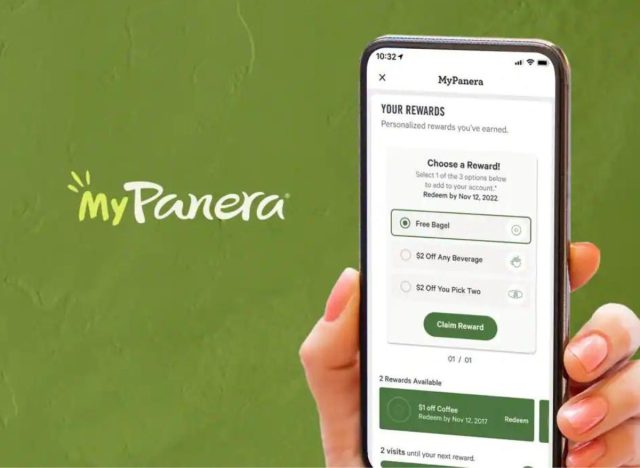5 Groundbreaking Ways Fast Food Could Change in 2023

Fast-food restaurants have multiple issues to consider as they make plans for growth and change in 2023, maybe even more factors than during the pandemic. The decisions that helped businesses survive during that time led to lasting habit changes for their customers, with a focus on convenience, speed, and less interaction. Now, restaurants have to predict the future and many are dreaming up groundbreaking ideas that could change fast food forever.
Will diners continue to want delivery options, even though they can be expensive? How will a possible recession affect buying habits? Will the labor pool return to work in fast food as payment is boosted?
People are coming back to in-person dining, but seem less willing to spend that time in a fast-food environment. As always, the fast food world reflects convenience and in 2023 that means an increase in digital and technology solutions.
It’s expected that all fast food restaurants will increase their digital marketing and automated processes to make work easier for their employees and purchasing more convenient for diners. One fact doesn’t seem to need a crystal ball. Customer demand for fast food isn’t fading despite the changes and unsure financial landscape.
GrubHub just released the country’s most popular delivery trends and fast food is prevalent in the list. The top ten shows burritos, cheeseburgers, cheese pizza, fried chicken sandwiches, and boneless wings.
Fast food restaurants continue to need to adapt and flex to a rapidly ever-changing environment. What will we see in this industry as we move into the next year? Here are some trends that will continue and some groundbreaking new ideas that will make the fast-food customer experience better in 2023.
Automation. Yes, we mean robots in some cases.

Your local fast-food restaurant has probably already taken steps to automate some of its processes. This approach will expand in 2023. While customers don’t seem ready to meet a robot at the front cash register, plans are being made to have bots deliver food at colleges, answer phones, and staff drink stations and fryers.
GrubHub made a deal with Kiwibot to collaborate for robot food delivery specifically on school campuses. The service is debuting at the University of North Dakota. They’re fresh off of other partnerships with Starship and Cartken for the same type of service and plan to use Kiwibot to expand even further. Uber Eats also partnered with Cartken for robot delivery.
Robots can effectively deal with staffing issues and take jobs that aren’t that appealing for their human counterparts (think manning the fryer). Kiosks make ordering more efficient, though patrons have mixed feelings about the lack of personal touch. AI voice technology is popping up in the drive-thru. For fast food restaurants specifically, technology will ease workloads for employees and expenses for owners.
More rewards and digital marketing

Expect to see more digital experiences driving rewards programs and advertising. Take Taco Bell as an example. In 2019, the taco empire had zero digital sales. Now, it tops 3 billion, 1 billion of which is attributed to new customers driven by ease of use and digital marketing. Yum! Brands—which also owns Pizza Hut, KFC, and Habit Burger—now plans to put tech and digital innovations front and center to drive business in an attempt to, essentially, take over the fast-food world. They aren’t alone.
Customers will see a more personalized approach to meeting their needs. This has a dual purpose. Increased value of rewards is expected to help with customer loyalty and data collected on the most frequent customers will inform restaurants what works and what doesn’t with their menus and pricing. For example, The MyPanera loyalty program, incorporates “surprise and delight elements” including early access to new items and the Unlimited Sip Club.
While inflation may cause changes in ingredients and sizes to address cost concerns, rewards offered to customers that meet exactly what they need when they need it may keep them coming back despite the adjustments.
Going green

McDonald’s recently purchased enough power from a solar project in Texas to support 100% of its U.S. logistics supply chain energy needs, meeting some of their goals for sustainability. Many restaurants are using smart tech in-house to address food waste. Operators are recognizing their customer’s desire for a more sustainable footprint and are answering that call.
More investment in convenience

Restaurants have seen the return of in-house dining since the pandemic, finally, but with a robust delivery or drive-thru clientele, they aren’t expanding those dining rooms. In fact, they are offering smaller to-go spots in other areas or downsizing new construction.
Fast casual restaurants are following this trend, so more options that you’d consider a dine-in restaurant might fall under the umbrella of fast food with new, smaller ‘to-go’ windows and cafes. Panera open its first two concepts that were designed to appeal to city people on the go, and those that just don’t want to linger for hours. Sweetgreen is opening drive-thru-only lanes, something Chipotle has been doing for a while.
As for true fast food restaurants, they attempting to make things even faster by revamping or completely changing their drive-thrus to add mobile-only pickup and automation. McDonald’s finally jumped on the new drive-thru bandwagon with a new concept, which isn’t nearly as cool as Taco Bell’s drive-thru of the future.
Food vending machines

This technology is poised to take off in 2023, reaching for a new level of fast and hot customer experience. A few companies have already rolled out fast-food vending machines in high-traffic locations, including Subway. This year, RoboBurger opened in a New Jersey mall and according to Today writer Jessica Montgomery, it even tasted good. There are prototypes being developed for pizza vending machines and Snackbots from Pepsico, easing labor and retail location costs and still providing a fast and tasty customer experience.









